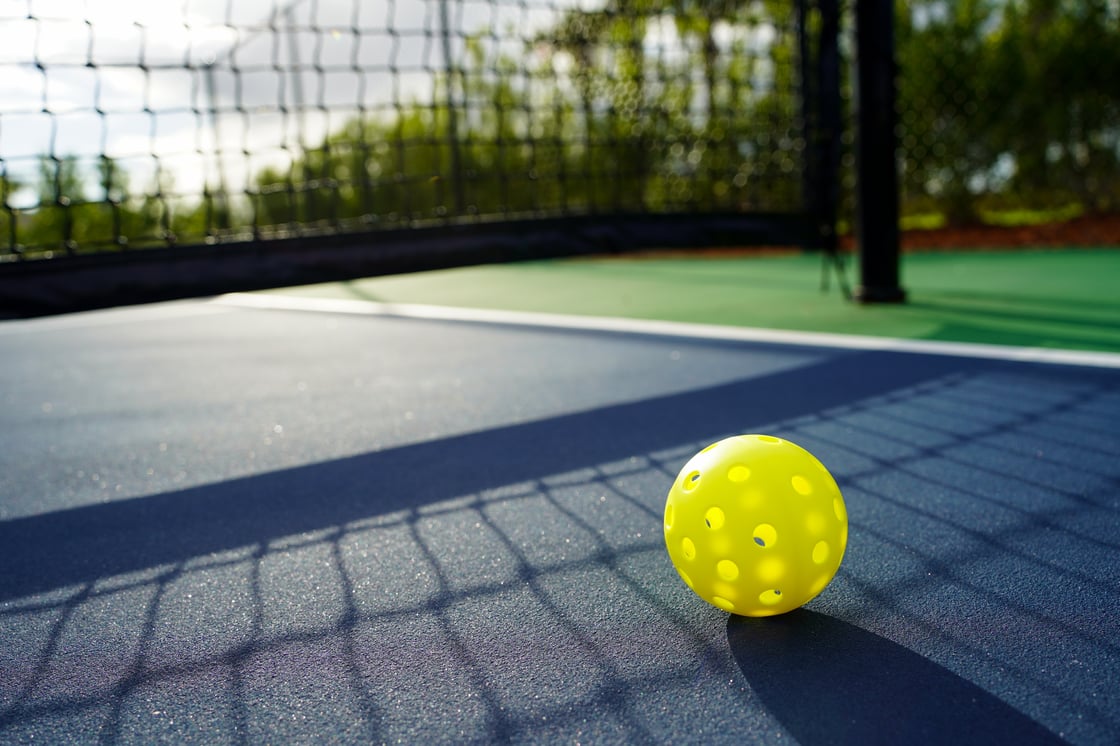Sometimes weird things can happen on a pickleball court and you’re not sure if it’s “allowed” to happen or not, which usually leads to the rally stopping.
Knowing the yes’s and no's, the do’s and don'ts will help you keep a rally going because any time you stop the point from playing on due to uncertainty then it’s a fault to your team and you risk losing a serve or the other team earns a point.
If you play out the rally until it’s finished then you can gain clarification. It’s hard to not let something distract you during a point but it’s better than the alternative.
Let's look at a few of the more common scenarios...

Scenario: You see the ball make contact with the other person’s hand and the ball comes back over to your side of the net - do you play the rally or stop it?
You or your partner must play the ball as if it was the opponent’s paddle that made contact. The official ruling (7.H.) is that the hand, below the wrist, is considered an extension of the paddle, so if the ball hits off of either part of the body, it’s considered a legal shot!
Scenario: You’ve hit the ball and bounces in the other teams’ non-volley zone, but before they can make contact the wind carries it back over to your side of the net - what can be done?
The opponent just needs to make contact with the ball (to their paddle) before it bounces on your side of the net. it doesn’t matter what kind of contact past it being the paddle (or hand/lower wrist). The person who attempts this cannot make contact with the net at any point during the process. For further clarification check out the official rulebook (11.I.1.)
Scenario: While dinking, the ball clips the net (this is called a ‘net cord’ ball) but as it’s traveling towards the ground, the ball hits the middle part of the net. What do you do?
The rally is considered over and you must replay that point (11.L.5.b.). This scenario can only happen with a temporary net system, where there is a lower bar and middle anchor piece. These parts of the net can get in the way of a rally and so when that happens, it’s a redo
Scenario: You’re playing a master lobber who dips into the well one too many times and the ball hits the ceiling (or fan) during one of their lob attempts. Everyone looks at one another not sure whether to replay the point or move onto the next rally.
Very simple - the rally is over and you do not replay the point. Unlike the previous scenario, the ceiling is not considered the same kind of hindrance as the net.
.jpg?upscale=true&width=1120&upscale=true&name=shutterstock_1294805881%20(1).jpg)
Scenario: The ball clips the net and your partner dives into the non-volley zone and dinks the ball back to the other side. The ball is a high dink though and it’s quickly volleyed by the other team. Your partner is still in the non-volley zone, on the ground; they roll out of the zone to get back into the point and start to get onto their feet but can’t quite do so before the next shot is hit at them and they volley the ball.
In this case, your partner has not re-established both of their feet on the ground, so it’s a foot fault. Anyone who enters the non-volley zone has to get back out and land both feet on the ground before they can attempt another volley.
Two scenarios: You attempt an ATP (around-the-post) however, you make contact with the net on follow-through. On your second ATP attempt, you make contact with the ball past the center of the court (so on the opponent's side of the court).
With both scenarios, the outcome is a fault (11.I., 11.M.), in order to hit a clean, legal ATP, you must not touch any part of the net during your shot attempt, nor can you cross over the center of the court before contacting the ball.
Pro Tip: The net posts are considered out of bounds! If you are playing on a makeshift net and the ball travels underneath the net cord line it is also considered out of bounds.
There are so many more uncommon scenarios that occur during games not mentioned above. They can be so infrequent that even some experienced players may not know the official ruling.
If you are a rec player then in most scenarios people will just replay the point, in a competition, players should know (or seek out) the official ruling.
As mentioned many times before, familiarizing yourself with the rules, which are provided by USA Pickleball will help you along your pickleball journey.
The rulebook usually has a few amendments that are made each year (at least, this has been the case since I’ve been playing) but for the most part, the majority of the document remains as is.
This article was taken from our 'Control the Kitchen' Newsletter, if you're interested in receiving more content like this, please feel free to sign up using the subscribe section located at the bottom left of this page (or underneath the article if you're on mobile), thanks!